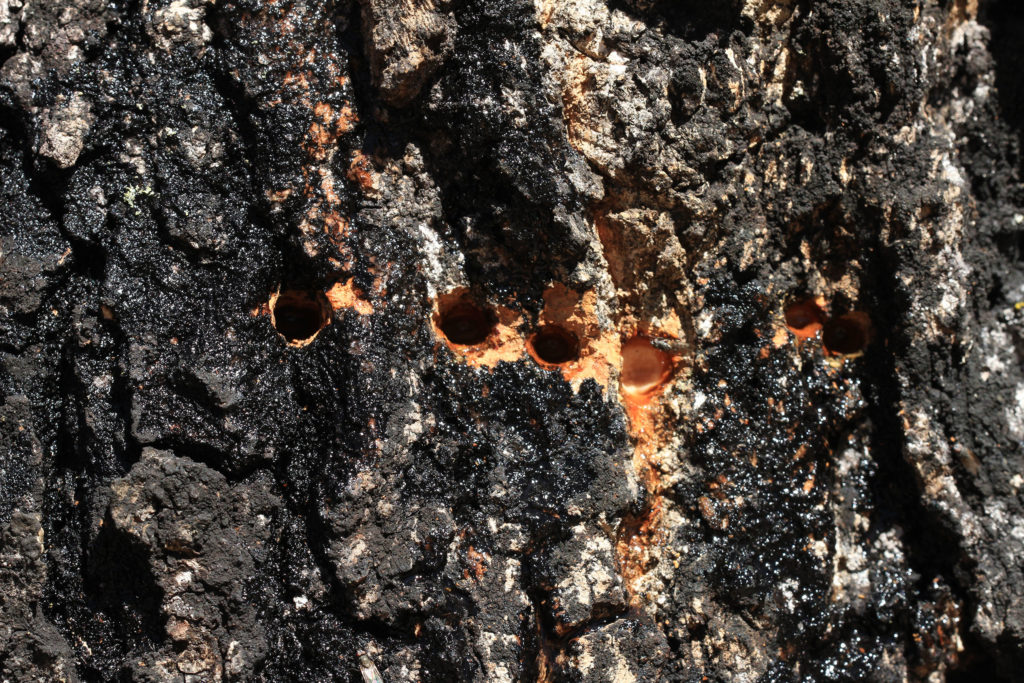
Often when in the woods in Michigan it is easy to find trees with rows of small holes approximately 3/16 to ¼ of an inch in diameter. Some trees have many sets of these holes of varying ages and degrees of healing over. These holes are drilled by Yellow-bellied Sapsuckers who winter south of Michigan and are summer residents of the Upper and norther half of the Lower Peninsulas of Michigan. While the major area of summer habitation and breeding is northward, very small numbers do breed in the southern Lower Peninsula. Some birds can also be seen in this southern region during the winter months. Records show that prior to the extensive logging that altered the landscape, they were common in the southern half of the lower peninsula as well.

The birds arrive back in Michigan in March and early April with the advent of the sap flowing in trees. Upon arrival, they drill holes through the bark to obtain the sap for food. The birds also eat the inner bark and cambium of the trees through these holes and may eat insects that are attracted to the sap. Studies indicate that less than 20 percent of the sapsucker’s diet is sap and cambium, with the majority of the rest being insects and some berries. It is interesting that they seem to feed on more adult flying insects and not on wood boring larvae like other woodpeckers.
Nesting takes place form early May through July. Michigan is home to approximately 190,000 Yellow-bellied Sapsuckers or 2.1 percent of the species total population. While sapsuckers are not the most common and are somewhat dinghy in appearance, they are always a treat for birders to see.
Visit https://youtu.be/byr_QyNPJC4 to view a 17 second video of a fly around the sapsucker hole on a tree in Leelanau State Park.
A useful online source of information on Breeding Birds in Michigan is the Breeding Bird Atlas II, http://www.mibirdatlas.org.
 Click on the title of a post to view a full gallery of images.
Click on the title of a post to view a full gallery of images.